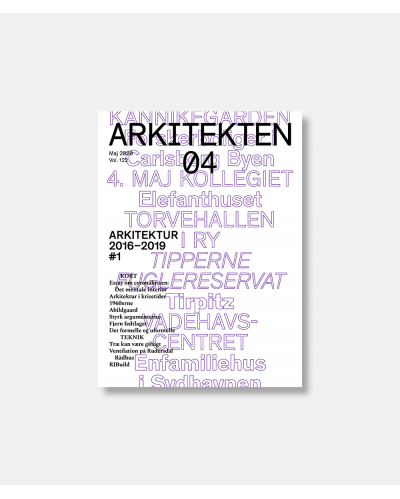Building Time - Architecture, event, and experience
Building Time - Architecture, event, and experience. This book explores architecture's temporal dimensions. Through a series of close readings of buildings, both contemporary and classic, it demonstrates the centrality of time in modern architecture, and shows why an understanding of time is critical to understanding good architecture.
Building Time - Architecture, event, and experience. This book explores architecture's temporal dimensions. Through a series of close readings of buildings, both contemporary and classic, it demonstrates the centrality of time in modern architecture, and shows why an understanding of time is critical to understanding good architecture.
Building Time - Architecture, event, and experience
While most books on architecture concentrate on spatial themes, this book explores architecture's temporal dimensions. Through a series of close readings of buildings, both contemporary and classic, it demonstrates the centrality of time in modern architecture, and shows why an understanding of time is critical to understanding good architecture.
All buildings exist in time. Even if designed for permanence, they change, slowly but inevitably. They change use, they accrue history and meaning, they decay – all of these processes are inscribed in time. So too is the path traced by the sun through a building, and the movements of the human body from room to room. Time, this book argues, is the framework for our spatial experience of architecture, and a key dimension of a building's structure and significance.
Building Time presents twelve close readings of buildings and artworks which explore this idea. Examining works by distinctive modern architects – from Eileen Gray to Álvaro Siza and Wang Shu – it takes the reader, in some cases literally step-by-step, through a built work, and provides insightful reflections on the importance of 'making space for time' in architectural design.
This is a book for both theorists and for architectural designers. Through it, theorists will find a way to rethink the fundamental premises and aims of design work, while designers will rediscover the order and ideas that shape the world around them-its buildings, interiors, and landscapes.
Introduction
1: Making Space for Time
Part One: The Time of the World
2: Day Time
3: Well-Timed Openings
4: Tempered Terrain
5: World Rhythms
Part Two: The Time of the Body
6: Taking Steps
7: Pacing and Spacing
8: Wandering Sites
9: Pedestrian Rhythms
Part Three: The Time of the Project
10: Past and Present Possibilities
11: Proposing Precedents
12: Recalling Future Projects
13: Project Rhythms
Bibliography
Index
About the author
David Leatherbarrow is Professor of Architecture at the University of Pennsylvania, where he has taught architectural design, history, and theory since 1984. In 2020, the AIA and ASCA awarded him the prestigious Topaz Medallion for excellence in architectural education. He lectures widely and holds guest professorships in Denmark and China. His previous publishing includes 20th Century Architecture, Architecture Oriented Otherwise, Topographical Stories, Surface Architecture(with Mohsen Mostafavi), Uncommon Ground, Roots of Architectural Invention, and On Weathering: The Life of Buildings in Time.
Reviews
“Leatherbarrow focuses his meditative attention on lasting works of architecture and art. Discussing projects and paintings with particular sensitivity to light and material, he works like a clockmaker, patiently disassembling architectural mechanisms into their component parts, and explaining how buildings operate in time.” – John Tuomey, O'Donnell + Tuomey Architects, Ireland
“When Leatherbarrow writes about time he is also writing about the slow and then ever faster passage of our own lives. Even as we visit the Pantheon to watch time literally move before our eyes and we are reminded that it also measures the span of our own existence. This is a dense, lyrical, and heartbreaking book about our lives and our buildings.” – Billie Tsien, Tod Williams Billie Tsien Architects, USA
“Linger, return, and remember rhythm this meditation on the interactions of time, space and place for both author and reader. Not since the romantic writers of the early 19th century has the temporal dimension of architecture been viewed patiently from so many facets.” – Barry Bergdoll, Meyer Schapiro Professor of Art History, Columbia University, USA
“Building Time suggests that architecture matters partly because architecture weathers orienting and grounding us: by keeping its identity amidst contextual change, inevitable decay, and eventual renewal, as well as recording its own creation and survival. The world stage, the active body and
the project script frame the close reading of chosen modern masterpieces in time and as time. Sound, serviceable, and delightful.” – Carlos Eduardo Comas, Federal University of Rio Grande do Sul, Brazil
“Building Time is a graceful, timely, and purposeful walk through a garden of architectural knowledge, offering an account-in all, a theory-not just of human spatial experience through time (first we go here, then we go there...), but of the world experiencing itself through the medium of buildings, especially buildings which, in having long-term ethical projects as well as complexities of their own, are works of architecture. With Proustian intimacy and often dizzying insight, Leatherbarrow enlarges the very language we use to understand architecture. Buildings are indifferent only apparently. In marking time, in accommodating the fleeting, in witnessing and in suffering, they bring up the future.” – Michael Benedikt, The University of Texas at Austin, USA
- Published
- 2020
- ISBN
- 9781350165199
- Publisher
- Bloomsbury
- Binding
- Hard cover
- Page count
- 288, 130 bw illus














